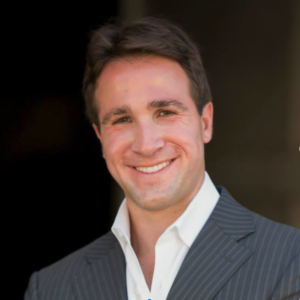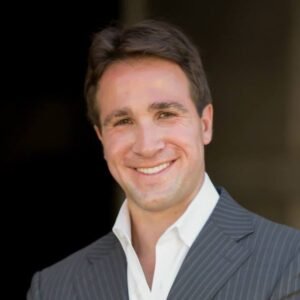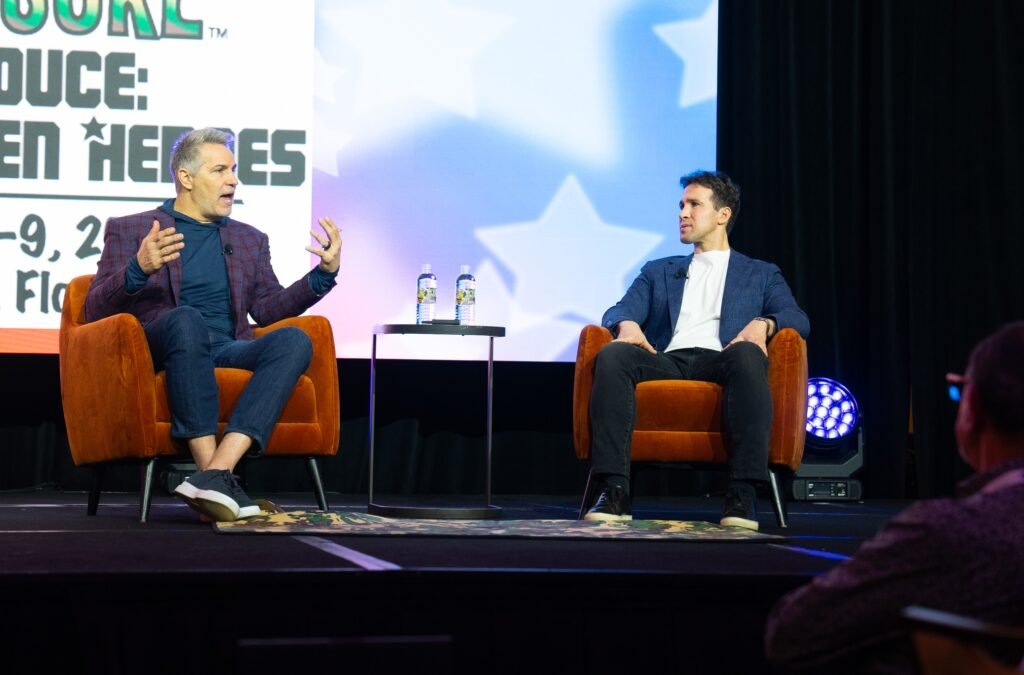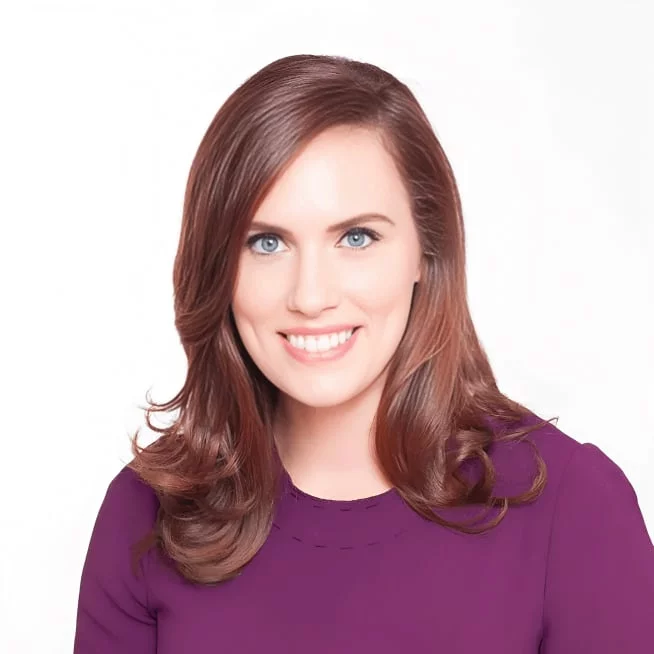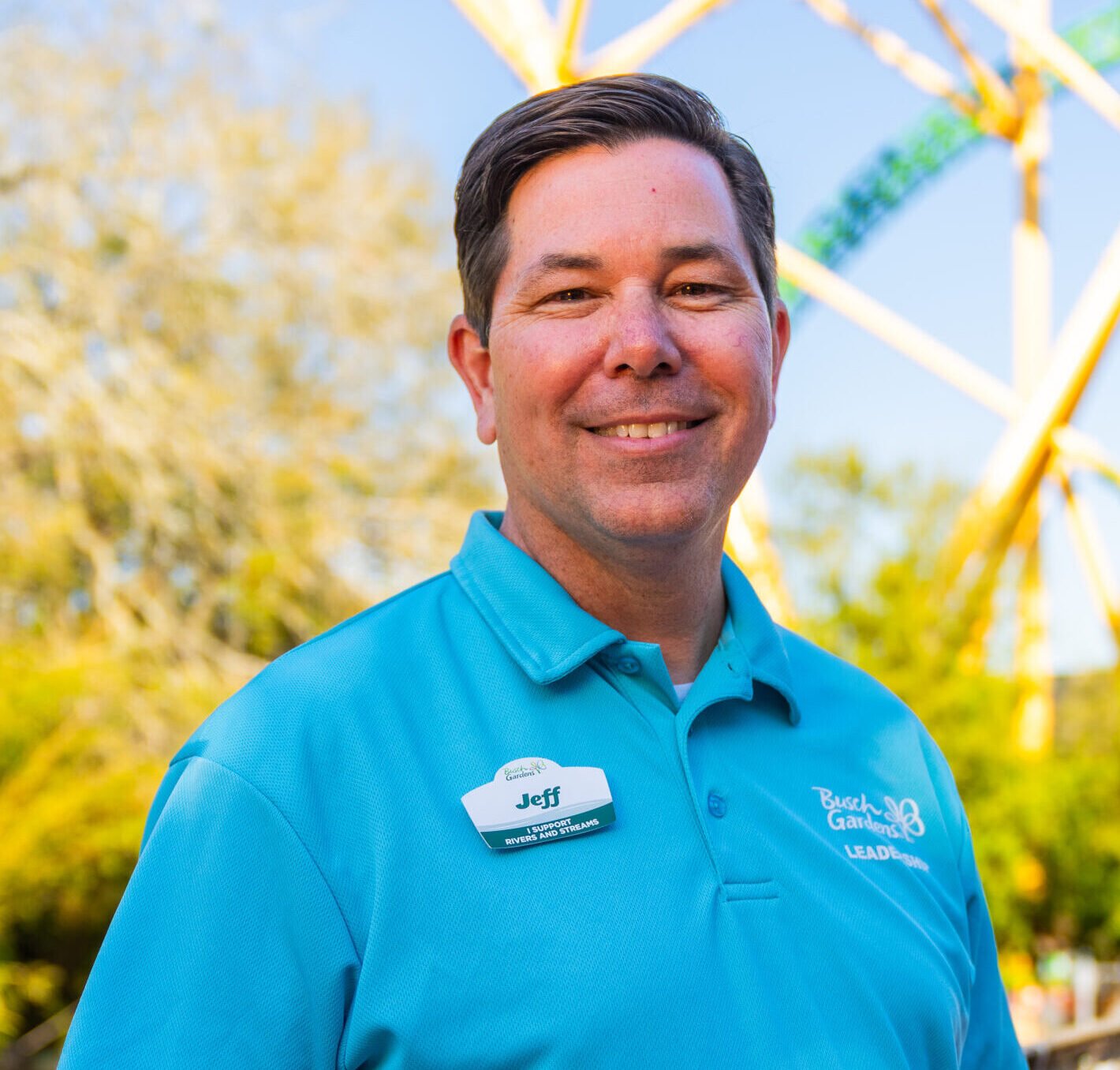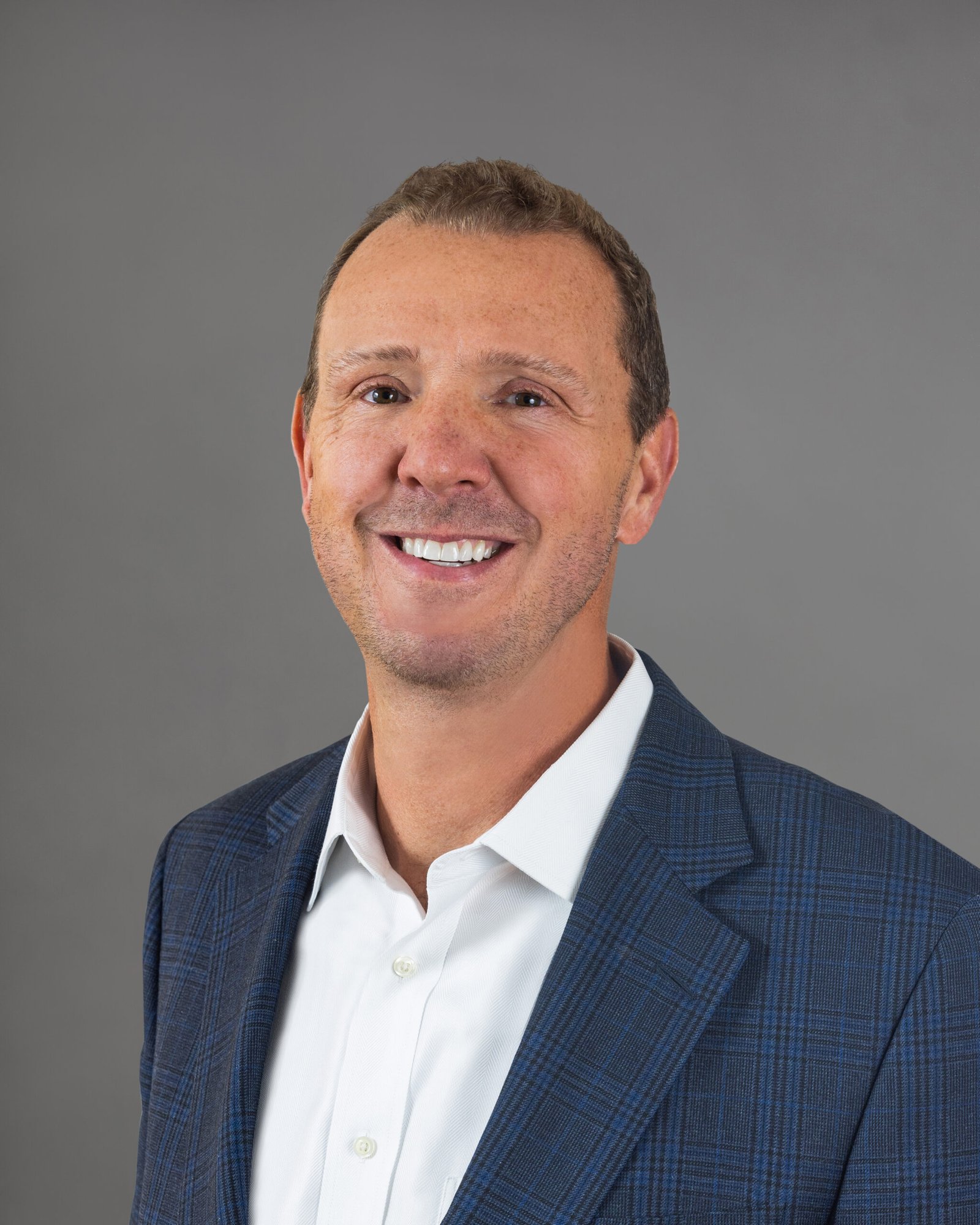I recently went one-on-one with Michael Cerdá. Michael was Chief Project Officer at Goldman Sachs’ Marcus division, Chief Experience Officer at Live Nation/Ticketmaster, and Chief Product & Technology Officer – Streaming & Digital at TelevisaUnivision. Michael is the author of the new book Build Something: Building Products, Business & Culture – A Journey of Hard-Won Lessons and Impactful Outcomes.
Adam: Thanks again for taking the time to share your advice. First things first, though, I am sure readers would love to learn more about you. How did you get here? What experiences, failures, setbacks, or challenges have been most instrumental to your growth?
Michael: I’ve spent my career at the intersection of technology, media, and product innovation—building, leading, and scaling teams at companies like Disney, Goldman Sachs, Facebook, Vevo, and most recently, TelevisaUnivision. My journey has been shaped by both success and failure. Early on, I co-founded a startup that didn’t work out. We built great tech, but the market timing wasn’t right.
That failure taught me resilience and the importance of knowing when to pivot. Later, I joined Facebook, where I worked on News, Music, and Live features, learning firsthand how to build products at scale with a relentless focus on user experience. At Goldman Sachs, I gained insights into the financial side of business, understanding how capital, risk, and investment decisions shape companies. Disney reinforced for me the power of storytelling and brand in product development.
Most recently, I led the product and technology org for a Spanish-language streaming service, growing it from inception to millions of users. That experience reinforced one of my core beliefs—great products aren’t just about technology, they’re about people. Throughout my career, I’ve learned that success is never a straight line. It’s a series of iterations, learnings, and sometimes setbacks that ultimately push you forward. Whether working at startups, large-scale corporations, or launching new initiatives, I’ve seen firsthand that adaptability and persistence are essential. You have to be willing to listen, learn, and adjust along the way. If you don’t build an environment where people feel empowered to take risks, innovate, and bring their best selves to work, you’ll never build anything truly great.
Looking back, every major growth point in my career w preceded by a challenge—whether it was shifting business priorities, organizational restructuring, or navigating the uncertainty that comes with launching something new. In those moments, what made the difference was not just technical expertise or executional skill, but the ability to stay focused on long-term impact. I’ve learned that the most resilient leaders are those who understand that failure isn’t the opposite of success; it’s a necessary step toward it.
Adam: What do you hope readers take away from your new book?
Michael: Build Something is about more than just building products—it’s about building cultures, teams, and careers that matter. I want readers to see that success isn’t about having the perfect plan; it’s about taking risks, learning from setbacks, and continuously iterating. Every successful product, company, and career has been built on a foundation of trial and error. Too often, people get caught up in trying to make something perfect before putting it out into the world. I want people to get comfortable with shipping, learning, and improving.
I also emphasize the importance of building a strong team and fostering an environment where people feel empowered to do their best work. One of the biggest takeaways I want readers to have is that leadership isn’t about control—it’s about enabling. Leaders who try to control every detail end up stifling creativity and innovation. Those who create space for experimentation, iteration, and feedback build the kinds of companies and products that last.
Beyond product and leadership, I want readers to take away a mindset shift—that the best careers and businesses are built on learning, resilience, and embracing change. I share real stories and experiences from my journey, not just the wins but the lessons from moments where things didn’t go as planned. Those are often the most defining moments. My hope is that this book provides readers with not just inspiration but a real roadmap for how to lead, build, and grow with purpose.
Additionally, I want readers to rethink the concept of risk. Many people hesitate to make bold moves in their careers or businesses because they’re afraid of making the wrong decision. But in reality, the biggest risk is inaction. Not trying, not experimenting, not learning—that’s what ultimately leads to stagnation. Build Something encourages people to embrace the unknown and have confidence in their ability to figure things out along the way.
Adam: In your experience, what are the keys to building great products?
Michael: Great products are built at the intersection of three things: a deep understanding of your users, a strong vision, and an ability to execute relentlessly. You have to start with empathy—really knowing what problem you’re solving and for whom. That means getting out of the building, talking to real users, and understanding their needs beyond just the surface level. Too many companies make the mistake of building products in a vacuum, assuming they know best. The best product leaders are always listening, always learning.
Then, you need a clear product vision that guides decisions but isn’t rigid. The best products evolve as new insights emerge. I’ve seen time and again that companies that stick too rigidly to a roadmap without incorporating feedback end up building things no one wants. Vision should be a guiding light, not a rigid set of instructions.
Finally, execution is everything. It’s about shipping fast, learning from data, and staying adaptable. I’ve found that the best product teams create a culture where speed and quality aren’t at odds—they coexist through smart prioritization and continuous iteration. Shipping fast doesn’t mean shipping sloppy. It means focusing on the right things at the right time, getting real-world feedback, and improving as you go. A great product team creates momentum—not just through shipping, but by fostering a culture of continuous learning.
Building great products isn’t just about technology or design—it’s about understanding human behavior. The best products feel intuitive because they align with the way people think, work, and interact with the world.
I’d also add that timing is crucial in product development. Even brilliant products can fail if they enter the market too early or too late. Understanding where your market is in its evolution is just as important as understanding your users’ needs. During my startup days, we built technically impressive technology, but the market wasn’t ready yet. That experience taught me to assess not just if users want a solution, but if they’re ready for it now.
Adam: What is your best advice on building, leading, and managing teams?
Michael: My best advice for building teams is to hire for diversity of thought and complementary strengths. The strongest teams I’ve led weren’t filled with people who thought like me—they included people who challenged my assumptions and brought different perspectives to the table. When you’re building a team, look for people who fill gaps in your own capabilities and who bring unique skills and viewpoints. This diversity leads to better decision-making and more innovative solutions.
When it comes to leading teams, transparency is essential. People do their best work when they understand the context—the why behind what they’re doing. I’ve always made it a priority to share the bigger picture with my teams: our goals, our challenges, the market dynamics we’re navigating, and how their work fits into the broader strategy. This transparency builds trust and enables people to make better decisions autonomously.
For managing teams effectively, I believe in setting clear expectations while giving people the freedom to determine how they’ll meet those expectations. Micromanagement kills motivation and creativity. The best managers I’ve known set clear outcomes, provide the resources and support needed to achieve them and then create space for their teams to own the process. They check in regularly, remove obstacles, provide feedback, but they don’t dictate every step of the journey.
I’ve also found that creating psychological safety is fundamental to team success. People need to feel safe to take risks, share ideas, and even fail without fear of punishment or ridicule. In every team I’ve led, I’ve worked to model vulnerability—sharing my own mistakes and learnings—and to celebrate when team members take smart risks, even when they don’t pan out exactly as planned. This approach encourages innovation and problem-solving that wouldn’t emerge in a fear-based environment.
Finally, recognize that team building is never “done.” Great teams require ongoing attention and care. Regular team retrospectives, intentional team-building activities, and investing in both individual and collective growth are all essential practices for maintaining a high-performing team over time.
Adam: What do you believe are the defining qualities of an effective leader?
Michael: The most effective leaders I’ve known share several defining qualities: vision, empathy, decisiveness, adaptability, and integrity. Vision allows a leader to paint a compelling picture of the future that inspires others to follow. Empathy enables them to understand the needs, motivations, and concerns of their teams, stakeholders, and customers. Decisiveness gives them the ability to make tough calls with imperfect information. Adaptability allows them to pivot when circumstances change. And integrity—doing what you say and saying what you do—builds the trust that’s essential for any leader to be effective.
Beyond these foundational qualities, I believe the best leaders possess self-awareness. They understand their strengths and weaknesses, and they build teams that complement their capabilities rather than mirror them. They’re comfortable acknowledging what they don’t know and seeking input from others. This self-awareness prevents the kind of ego-driven leadership that ultimately limits an organization’s potential.
Effective leaders are also skilled communicators—not just in articulating their vision, but in listening deeply to others. They ask thoughtful questions, seek to understand before being understood, and adjust their communication style to meet the needs of different audiences. Throughout my career, I’ve observed that the most influential leaders aren’t necessarily the most charismatic speakers; they’re the ones who make others feel truly heard and valued.
Another defining quality is courage—the willingness to make unpopular decisions, challenge the status quo and stand up for what’s right even when it’s difficult. During my time at Facebook and Disney, I witnessed leaders who had the courage to advocate for changes that weren’t immediately popular but were ultimately right for the product and the business. That kind of courage, especially when combined with humility, is rare and powerful.
Finally, the best leaders maintain a growth mindset. They view challenges as opportunities to learn, seek feedback constantly, and never assume they’ve “arrived.” They model continuous learning for their organizations and create cultures where growth and development are valued at all levels.
Adam: How can leaders and aspiring leaders take their leadership skills to the next level?
Michael: Three things: Seek feedback, stay curious, and lead with authenticity. The best leaders I’ve worked with actively solicit feedback—not just from their peers but from their teams. They don’t just hear it; they act on it. Staying curious means constantly learning, whether that’s from books, mentors, or real-world experiences. And finally, authenticity is what sets great leaders apart. People follow leaders who are real, who show vulnerability, and who lead with conviction rather than ego.
Leadership is a journey, not a destination. The best leaders never stop learning, never stop refining their approach, and never assume they have it all figured out. Growth as a leader is an ongoing process of learning from experience, taking feedback, and being willing to evolve.
I also encourage leaders to think beyond their immediate responsibilities. The best leaders don’t just focus on their own growth; they invest in the growth of others. They mentor, they support, and they create opportunities for the next generation of leaders. A great leader’s legacy isn’t measured by their own success—it’s measured by the success of the people they’ve helped along the way.
To take your leadership to the next level, I recommend deliberately seeking challenging assignments that push you beyond your comfort zone. The most significant leadership growth happens when you’re tackling problems you haven’t solved before. Throughout my career, my biggest leaps in leadership capability came when I took on roles or projects that required me to develop new skills and approaches.
Finally, build a personal “board of advisors”—a diverse group of mentors and peers who can provide honest feedback, different perspectives, and guidance as you navigate leadership challenges. These relationships have been invaluable in my own leadership journey, particularly during times of significant transition or uncertainty.
Adam: What are your three best tips applicable to entrepreneurs, executives, and civic leaders?
Michael: First, prioritize ruthlessly. Whether you’re leading a startup, a corporate division, or a community initiative, your most valuable resource is focus. There will always be more opportunities, ideas, and demands than you can possibly address. The most effective leaders I’ve known have the discipline to say no to good opportunities so they can say yes to great ones. This means being crystal clear about your priorities—the few things that will truly move the needle—and aligning your time, energy, and resources accordingly.
Second, build genuine relationships. Leadership is fundamentally about people, and authentic connections create the foundation for everything else you’ll do. Take the time to understand the people you work with—their strengths, aspirations, and concerns. Build relationships across different departments, industries, and communities. Some of my most valuable insights and opportunities have come through unexpected connections. This isn’t about transactional networking; it’s about creating a web of authentic relationships that create value for everyone involved.
Third, embrace continuous reinvention. In today’s rapidly changing environment, what worked yesterday may not work tomorrow. The most successful leaders I’ve observed are those who constantly question their assumptions, seek out new perspectives, and are willing to reimagine their approach. This applies whether you’re developing a new product, restructuring an organization, or addressing a community challenge. Commit to regular reflection on what’s working, what’s not, and what might need to change—before circumstances force that change upon you.
These principles have served me well across different leadership contexts, from launching startups to leading large teams at established companies. They’re equally applicable whether you’re an entrepreneur building a new venture, an executive navigating a corporate landscape, or a civic leader working to create positive change in your community.
Adam: What is the single best piece of advice you have ever received?
Michael: The single best piece of advice I’ve ever received came from a mentor early in my career who told me: “Run toward the fire, not away from it.” This simple statement fundamentally changed how I approached challenges and opportunities.
What he meant was that the most valuable growth happens when we tackle the problems that others avoid because they seem too difficult or messy. Throughout my career, I’ve found that the most rewarding work and the greatest learning have come from embracing complex challenges—whether that was stepping into a struggling project that needed a turnaround, navigating the ambiguity of launching something entirely new, or taking on roles that stretched beyond my existing skill set.
This advice has guided many of my career decisions. When others saw complexity as a reason to hesitate, I began to see it as an opportunity to create value in ways others couldn’t or wouldn’t. At Disney, I worked on initiatives that required bridging traditional media with emerging digital platforms—problems with no clear playbook. At Goldman Sachs, I built a modern-day product and design team in a company that didn’t even have computers. Each of these experiences pushed me to develop new capabilities, perspectives, and patience.
What I’ve learned is that complexity is where innovation happens. It’s in the messy intersections between disciplines, in the thorny problems that don’t have obvious solutions, in the spaces where conventional wisdom falls short. By running toward complexity rather than away from it, I’ve not only accelerated my own growth but have been able to contribute in ways that created meaningful impact.
This mindset has become central to how I approach leadership and problem-solving. When faced with a complex challenge, I now see beyond the immediate difficulties to the opportunities that lie within. This doesn’t mean being reckless or naive about difficulties, but rather developing the confidence that comes from knowing you can navigate through complexity to find clarity and solutions.
Adam Mendler is an entrepreneur, writer, speaker, educator, and nationally recognized authority on leadership. Adam is the creator and host of the business and leadership podcast Thirty Minute Mentors, where he goes one-on-one with America’s most successful people – Fortune 500 CEOs, founders of household name companies, Hall of Fame and Olympic gold medal-winning athletes, political and military leaders – for intimate half-hour conversations each week. A top leadership speaker, Adam draws upon his insights building and leading businesses and interviewing hundreds of America’s top leaders as a top keynote speaker to businesses, universities, and non-profit organizations. Adam has written extensively on leadership and related topics, having authored over 70 articles published in major media outlets including Forbes, Inc. and HuffPost, and has conducted more than 500 one on one interviews with America’s top leaders through his collective media projects. Adam teaches graduate-level courses on leadership at UCLA and is an advisor to numerous companies and leaders. A Los Angeles native, Adam is a lifelong Angels fan and an avid backgammon player.
Follow Adam on Instagram and Twitter at @adammendler and on LinkedIn and listen and subscribe to Thirty Minute Mentors on your favorite podcasting app.

